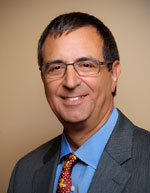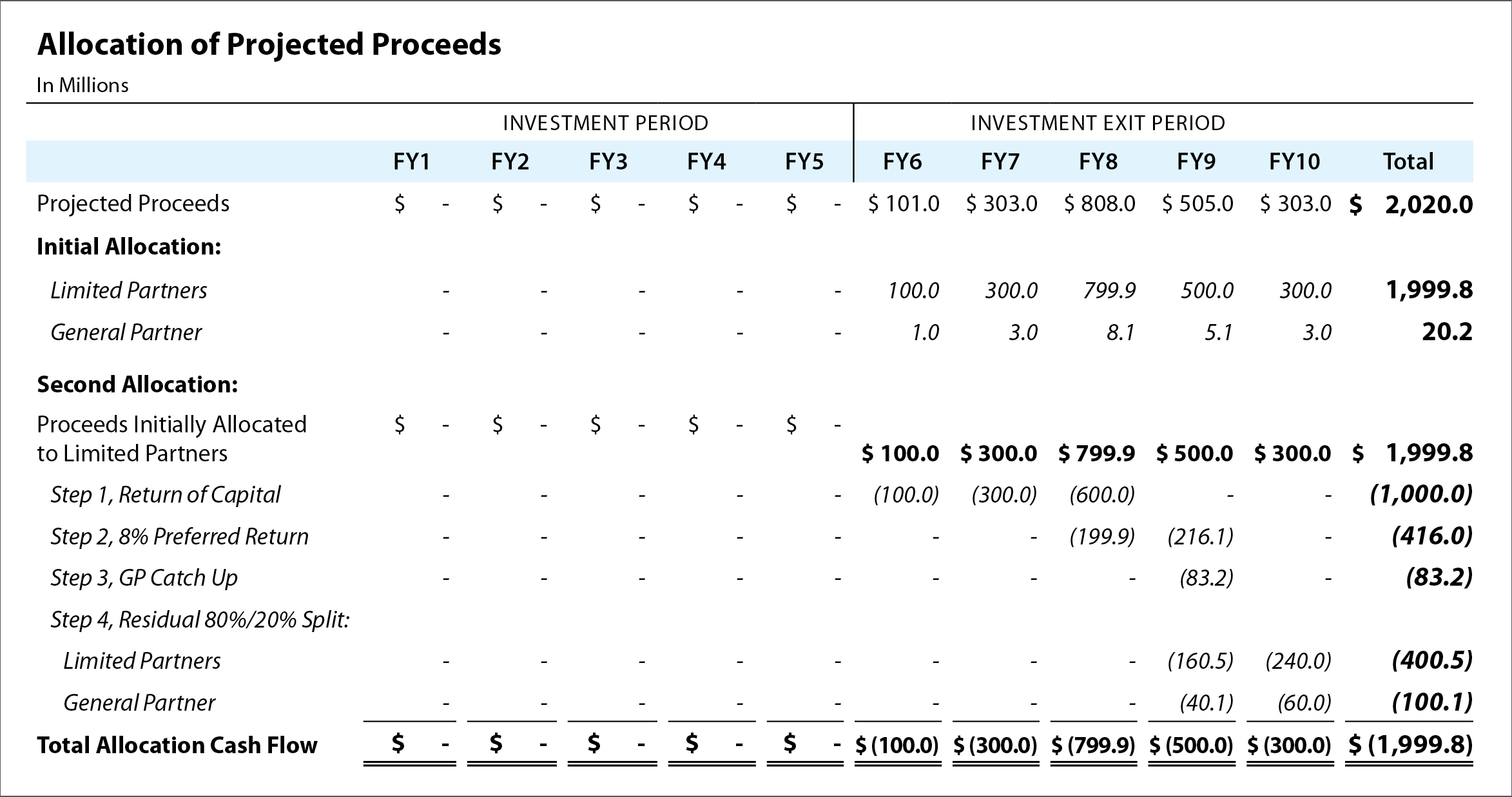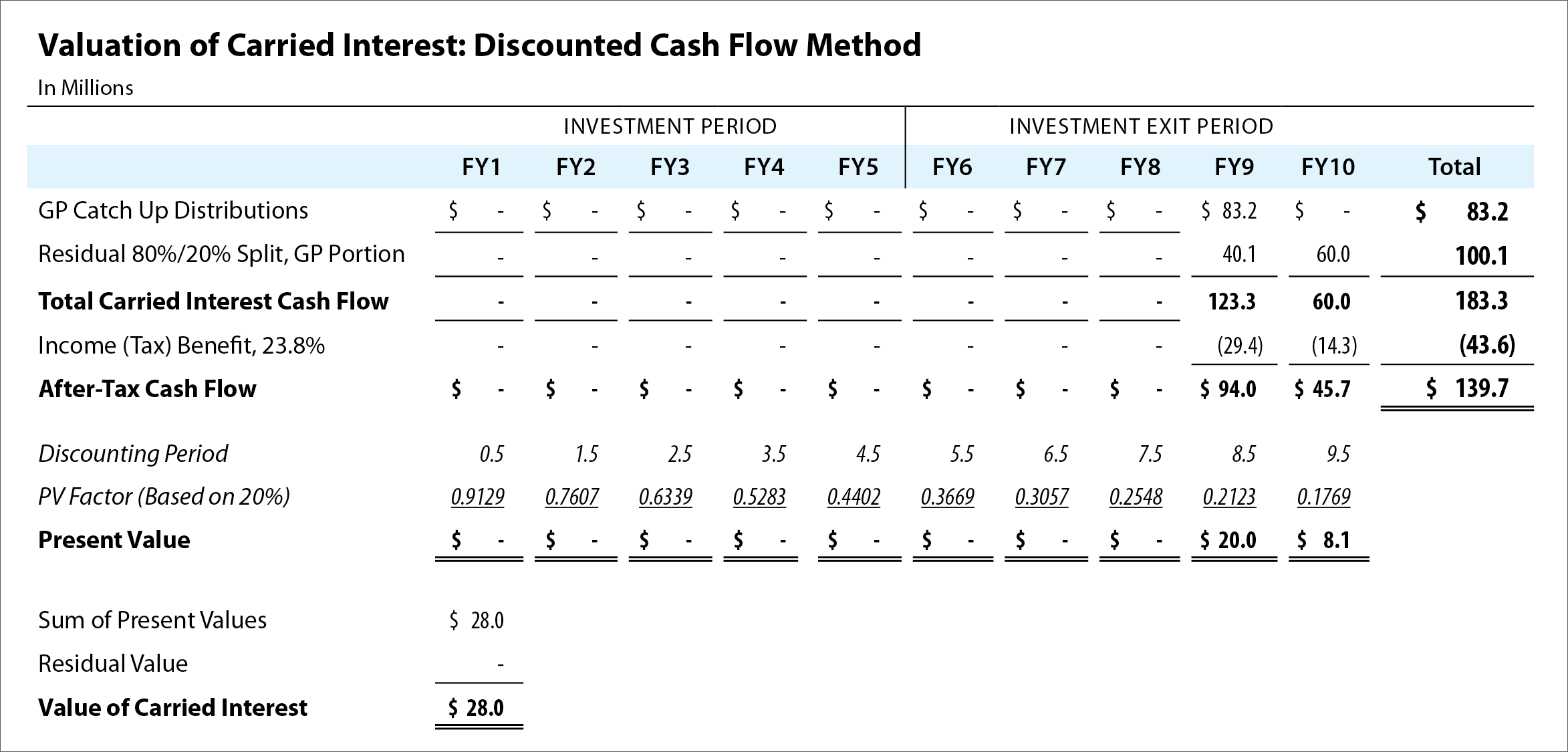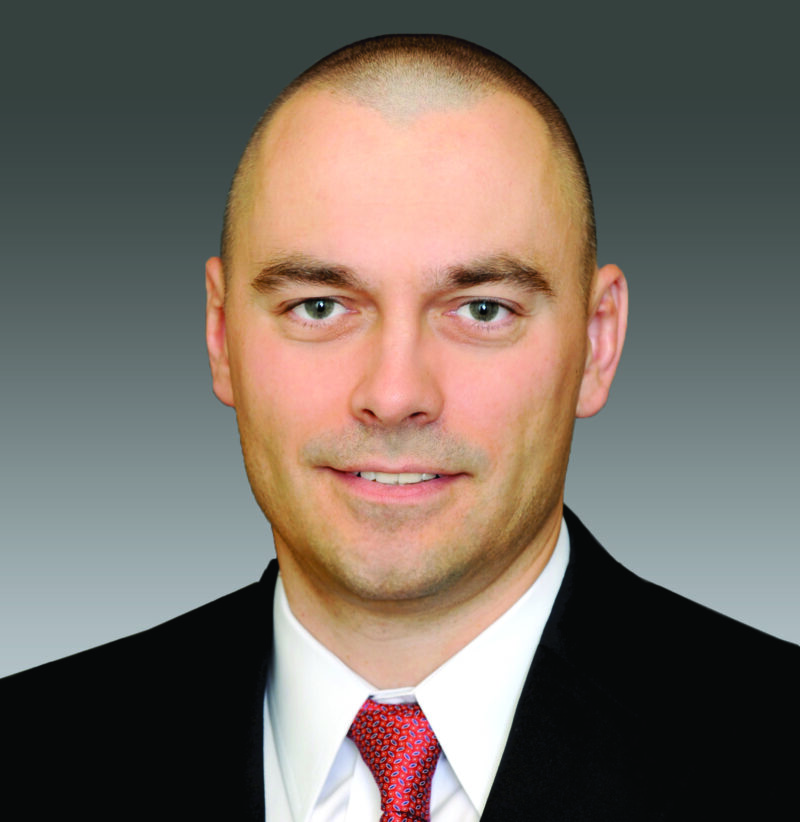FROM THE FOUNDATION PRESIDENT
 Happy New Year! Welcome to the second issue of Forensic and Business Valuation News and Views.
Happy New Year! Welcome to the second issue of Forensic and Business Valuation News and Views.
Let’s start out the year with a hypothetical: You represent the spouse of someone who invested, with your client’s prior knowledge and consent, $1,000,000 of community or marital property (depending the state in which your practice is located) in a private equity investment partnership. The joint funds were invested one year ago, and by the terms of the partnership the payout to investors is to be completed 10 years from the inception of the fund (nine years from now). There is a “guaranteed” return of 8%, to be paid at the end of year 8. But if the fund performs as expected, there will be a return of far more than that by the end of year 10. There is no dispute that the investment is community or marital property. The larger increment – and the reason that people invest in private equity funds such as this one – is the so-called “carried interest.”
Your client can, of course, “stay in” and split the return – whatever it is – at the end of 10 years. But let’s suppose that your client does not have the same tolerance for risk as the spouse who made the investment (see, for example, In re Marriage of Burkle (Burkle II) (2006) 139 Cal.App.4th 712) or just does not want to wait nine years to cash out. So now you’re thinking about awarding the investment to the “investor” spouse at its current value, as would be the case with a piece of real estate or a business that is awarded to one spouse rather than left in co-ownership.
But wait! This isn’t a house or a business. It’s not even a pension that can be valued and awarded to one spouse (even though that happens a lot less often now than it did 50 years ago).
The present value of the 8% return is easy for your friendly forensic to determine, but what about the carried interest? That’s the big number. So before you put your client into a settlement whereby he or she receives a lump sum for half the carried interest, the amount of which has not yet been determined, you better make sure that it’s valued properly. You also need to be sure that you know enough about how the payout is determined to be able to explain it clearly to your client.
That is the subject of this issue’s article by Forensic and Business Valuation Division Member Vlad Korobov, “Carried Interest: What It Represents and How to Value It.” Vlad not only explains how you (or, let’s face it, your expert) should “crunch the numbers,” he gives us an example of how it’s done.
Here’s why you need to get it right: After entering into a postnuptial agreement to have her husband cash her out of a number of high-dollar, high-risk investments, upon divorce the wife in Burkle, supra, saw how much he had made from them and tried to get the court’s permission to change her mind. The California Court of Appeal held that she could not get a “do-over.”
We know you’ll enjoy Vlad’s article and hope you’ll find it useful.
With warm regards,
Lawrence A. Moskowitz
AAML Foundation President
CARRIED INTEREST: WHAT IT REPRESENTS AND HOW (BEST) TO VALUE IT
Vladimir V. Korobov, CPA, ABV, ASA
 What is Carried Interest?
What is Carried Interest?
As a type of incentive compensation, carried interest and similar profit-sharing arrangements [1] have been around for a long time. The notion of carried interest dates back to medieval times and relates to the share of profits that ship captains received on the cargo they carried.
Carried interest has been a staple of the private equity and venture capital industries in the United States for many years.
How It Works
Carried interest typically represents a share of proceeds from a sale of a portfolio investment, which is determined using the proceeds allocation formula (often referred to as a “waterfall”) specified in an investment fund’s formational document, such as a partnership agreement. Following is an example of a typical waterfall used in private equity and venture capital funds:
Initial Allocation: Proceeds from the sale of a portfolio investment are initially allocated pro rata between a general partner (“GP”) and the limited partners (“LPs”) based on the partners’ respective capital contribution percentages.
Second Allocation: Proceeds initially allocated to the LPs are then re-allocated between the LPs and a GP as follows:
- Step 1, Return of Capital – First, 100% to LPs until LPs have recouped their capital contributions used to fund portfolio investments, fees and expenses;
- Step 2, Preferred Return – Then, 100% to LPs until LPs have earned an 8% return (compounded annually) on their capital contributions;
- Step 3, GP Catch Up – Then, 100% to a GP until the GP has received 20% of the amount distributed to the LPs in Step 2; and
- Step 4, Residual Split – Thereafter, 80% to the LPs and 20% to the GP.
The GP’s right to receive distributions under Steps 3 and 4 above represents the GP’s carried interest in the investment fund.
Why Value Carried Interest?
If an investment fund is successful, carried interest can generate significant distributions to a holder over the fund’s life. It is not a surprise then that a question of valuation of carried interest often becomes a hot issue in a divorce.
When “Value” May Not Be Value
Readers may ask: “If a GP of the fund determines the values of the fund’s investments as of a given date and calculates the amount of a carried interest distribution, if any, that the GP would receive upon a hypothetical liquidation of the fund’s investments at those values, wouldn’t the amount of the distribution represent the value of the GP’ carried interest on that date?” The answer, in most cases, is generally no for at least three reasons.
First, a hypothetical liquidation scenario does not capture any potential value of a fund’s “dry powder,” i.e. remaining capital commitments. This potential value is highest at the earlier stages of a fund’s life. Second, the hypothetical liquidation scenario does not reflect the time value of money. Third, carried interest effectively represents a call option on a share of the fund’s profits over the investors’ preferred return. Thus, the hypothetical liquidation scenario does not consider a potential for future appreciation of the value of the investments, i.e., the time value of the call option, which can be significant in the early stages of the fund’s term.
Carried Interest Valuation
If the hypothetical liquidation scenario is not the right answer to the question of value of a carried interest in most cases, then what is? The right answer is the present value of the expected cash flow, or the carried interest distributions expected to be received over the life of the fund. The present value can be determined utilizing either an option-pricing framework, or a discounted cash flow method. In this essay, we will illustrate a valuation analysis using the discounted cash flow method.
Let us consider the following scenario. A private equity firm has just raised a new fund with $1 billion of investor commitments. The GP of the fund has committed 1.0% of the investor commitments, or $10.0 million. The fund has a term of 10 years, which is divided into the investment period (the first five years) and the investment exit period (the last five years). Based on experience with earlier funds, the GP expects an average holding period for investments to be 5 years, and believes that the fund could realize value of 2 times invested capital. The GP estimates the following capital drawdown schedule during the investment period:[2

Based on the estimated capital drawdown schedule, the expected holding period, and the targeted performance of 2 times invested capital, we can develop a forecast of cash flow over the fund’s term:

We can then allocate the projected proceeds between the general partner and limited partners using the typical waterfall presented earlier:

Now that we have identified the future carried interest distributions – specifically, the distributions to the GP in Steps 3 and 4 — we can determine the value of the carried interest as the present value of the projected carried interest distributions. Assuming an income tax rate of 23.8% and a discount rate of 20%, the value of the carried interest would be $28.0 million, as calculated in the following table:

[1] An example of a profit sharing arrangement similar to a carried interest is a developer’s promote in a real estate development project.
[2] For purposes of this illustration, we will disregard management and other fees that limited partners may be subject to.
[3] The income tax rate consists of the federal long-term capital gain tax rate of 20% and the net investment income tax of 3.8%. For illustration purposes, we assumed that the carried interest distributions would not be subject to the state income taxes.
VLADIMIR V. KOROBOV, CPA, ABV, ASA, is a partner at Marcum LLP in the Valuation and Litigation Support Services group. He has more than 20 years of experience providing business valuation, litigation support, and advisory services with a focus on alternative and traditional asset management, and financial institutions.

The Officers and Directors of the American Academy of Matrimonial Lawyers Foundation wish to express our sincere gratitude to the following individuals listed below: the 2020 donors, sponsors, Forensic and Business Valuation Division members, and all other supporters of the work of the Foundation.
The year 2020 will be remembered for the extreme challenges presented to the social order. While the needs of children, victims of domestic violence and individuals going through divorce dramatically increased this year, sources to address those needs contracted. The pandemic has underscored the increased need for medical care, mental health treatment, and housing and technology for parents and children at a time when the safety net of charities which normally operate near the edge was hit hard. Candid, an advisor to charitable organizations, reported that while approximately 12,000 U.S. charities cease operations each year, they expected as many as 120,000 charities to cease operating during this pandemic year, which could result in a crisis of epic proportions.
The urgency of the moment demands that people who can afford to donate give as much as they can. Our donors, sponsors, F&BV Division members, and other supporters stepped up in 2020 and deserve our recognition and gratitude. Will you look back five or ten years from now and wish you had done less?
2020 Billable Hour Donors
We thank those who made their annual donation to the Foundation in an amount equal to one billable hour of their time. The billable hour campaign funds our annual grants.
Alabama
Anne Lamkin Durward
G. John Durward, Jr.
Kathryn C. Gentle
Arizona
William D. Bishop
Helen R. Davis
Kiilu Davis
Aris J. Gallios
California
Hal D. Bartholomew
Robert A. Benavente
Michele M. Bissada
Robert E. Blevans
Andrew J. Botros
Robert C. Brandt
Sharon A. Bryan
Renee R. Chernus
Bruce A. Clemens
Joseph P. Crawford
Gordon D. Cruse
Judi A. Curtin
Patrick DeCarolis, Jr.
Hildy L. Fentin
Scott H. Finkbeiner
Shane R. Ford
Ira M. Friedman
Saul M. Gelbart
Donna T. Gibbs
Larry A. Ginsbeg
William J. Glucksman
Ronald S. Granberg
Abbas Hadjian
Stephen D. Hamilton
James William Hargreaves
Gregory W. Herring
Neal Raymond Hersh
Evan C. Itzkowitz
Daniel J. Jaffe
Scott M. Klopert
Michael J. Kretzmer
Alexandra Leichter
Avi Levy
Thomas Trent Lewis
Victoria K. Lewis
Arthur C. Lin
Sharon F. Mah
Deborah J. Marx
Sandra L. Mayberry
John P. McCall
Yasmine Suzanne Mehmet
Shannon B. Miles
Steven A. Mindel
Lawrence A. Moskowitz
Alexandra Mussallem
Lorie S. Nachlis
Annette Hall Neville
Ashley M. Rodet
Gretchen B. Rubel
Geniveve J. Ruskus
William S. Ryden
Lee W. Salisbury
John R. Schilling
Glen Howard Schwartz
Brian G. Seastrom
Philip G. Seastrom
Lonnie K. Seide
Thomas L. Simpson
Sheila Prell Sonenshine
Harold Jay Stanton
Eleanor A. Stegmeier
Jeff M. Sturman
Nancy A. Taylor
Edward J. Thomas
Suzie S. Thorn
Rebecca A. Tran
Thomas W. Tuttle
Stephen James Wagner
Gretchen M. Wallacker
Marshall W. Waller
Peter W. Walzer
Thomas W. Wolfrum
Marshall S. Zolla
Colorado
Carl O. Graham
Denise K. Mills
Connecticut
David W. Griffin
Lee Marlow
Edward Nusbaum
Sarah S. Oldham
Thomas P. Parrino
Gerald A. Roisman
Arnold H. Rutkin
Frederic J. Siegel
Paul T. Tusch
Christine M. Whitehead
District of Columbia
Sanford K. Ain
Marina S. Barannik
Barbara A. Burr
Gregory R. Nugent
Paul R. Smollar
Natalia C. Wilson
Florida
Kristin Adamson
Jesse J. Bennett, Jr.
Caroline Black Sikorske
Alexander Caballero
Jorge M. Cestero
J.J. Dahl
Lawrence C. Datz
Rueben A. Doupe
Dori Foster-Morales
Melinda P. Gamot
Carmen R. Gillett
Peter L. Gladstone
Caryn M. Green
N. Diane Holmes
Allyson Hughes
Joseph D. Hunt
Brian M. Karpf
Mitchell K. Karpf
Ky M. Koch
Natalie S. Lemos
Ashley McCorvey Myers
Shannon L. Novey
Yueh-Mei Kim Nutter
Jonathan S. Root
Elisha D. Roy
Thomas J. Sasser
Philip J. Schipani
John F. Schutz
Mark A. Sessums
Robert W. Sidweber
Laura Davis Smith
Bonnie S. Sockel-Stone
Karen B. Weintraub
Richard D. West
Ralph T. White
Georgia
Jonathan R. Levine
Elizabeth Green Lindsey
Tina Shadix Roddenbery
Alvah O. Smith
Bruce R. Steinfeld
Illinois
Brian J. Blitz
Stephen R. Botti
Janet E. Boyle
Jeffrey W. Brend
William G. Clark, Jr.
Kimberly A. Cook
Joy M. Feinberg
Howard W. Feldman
Gunnar J. Gitlin
Cecilia Hynes Griffin
Meighan A. Harmon
Burton S. Hochberg
Adam C. Kibort
Steven H. Klein
Michael F. Koenigsberger
Karen L. Levine
David H. Levy
Carlton R. Marcyan
Lee A. Marinaccio
Nanette A. McCarthy
Alyssa Mogul
Lisa M. Nyuli
Riaford D. Palmer
Saundra L. Rice
Allison Audra Stein
Anita M. Ventrelli
Steven Gregg Wittenberg
Errol Zavett
Richard Wayne Zuckerman
Iowa
Jacob R. Koller
Kansas
T. Lynn Ward
Kentucky
Jeffery P. Alford
Bonnie M. Brown
Laurel S. Doheny
Ross T. Ewing
Maine
Catherine C. Miller
Elizabeth J. Scheffee
Maryland
David S. Coaxum
Susan Carol Elgin
Maureen Glackin
Michael G. Hendler
Cheryl Lynn Hepfer
Heather Quinn Hostetter
Richard B. Jacobs
Stephen Philip Krohn
Rhian McGrath
Christopher W. Nicholson
Linda Sorg Ostovitz
Linda J. Ravdin
Paul J. Reinstein
Thomas C. Ries
Mary R. Sanders
Keith N. Schiszik
Howard B. Soypher
Laurie M. Wasserman
Deborah L. Webb
Vincent M. Wills
Massachusetts
Jennifer B. Koiles Pratt
Jennifer C. Roman
Ronald A. Witmer
Michigan
Mark A. Bank
Elizabeth K. Bransdorfer
Lori Ann Buiteweg
Laura E. Eisenberg
B. Andrew Rifkin
Richard A. Roane
Lynn Capp Sirich
Minnesota
Brian L. Sobol
Lisa T. Spencer
Missouri
Gail Berkowitz
James T. Cook
Cary J. Mogerman
John S. Pratt
Anita I. Rodarte
Nebraska
Virginia A. Albers
John S. Slowiaczek
Nevada
Jennifer V. Abrams
Robert Cerceo
Marshal S. Willick
New Jersey
Cary B. Cheifetz
Amy Sara Cores
Carolyn N. Daly
Richard F. Iglar
Jeralyn L. Lawrence
Madeline Marzano-Lesnevich
Christopher Rade Musulin
Francesca M. O’Cathain
Gary N. Skoloff
Edward S. Snyder
Eric S. Solotoff
New Mexico
Twila B. Larkin
New York
Alton L. Abramowitz
Susan L. Bender
Mitchell Y. Cohen
Donna M. Genovese
Sylvia Goldschmidt
Leigh Baseheart Kahn
Nancy D. Kellman
Allan D. Mantel
John Anthony Pappalardo
Lee Rosenberg
North Carolina
Shelby Duffy Benton
Joslin Davis
Barbara R. Morgenstern
Tate K. Sterrett
Robin J. Stinson
Elise M. Whitley
Ohio
Gerald Jay Babbitt
Phyllis G. Bossin
Douglas M. Brill
Andrea L. Cozza
Scott N. Friedman
S. Scott Haynes
Corinne Hoover Six
Wijdan Jreisat
Jacqueline L. Kemp
James R. Kirkland
Jacob A.H. Kronenberg
Randal A. Lowry
Pamela J. MacAdams
Denise M. Mirman
Gary M. Rosen
Mark Edward Stone
Timothy A. Tepe
Craig P. Treneff
Lon R. Vinion
Amy J. Weis
Oklahoma
David W. Echols
Richard A. Wagner, II
Pennsylvania
Julia A. Auerbach
Robb D. Bunde
Brian J. Cali
Mary Cushing Doherty
Sandra Edwards Gray
David N. Hofstein
Candice L. Komar
David L. Ladov
James E. Mahood
Charles J. Meyer
Colleen M. Neary
James H. Richardson, Jr.
Reid B. Roberts
Lori Kessler Shemtob
Randi J. Silverman
Julia Swain
Brian C. Vertz
Robert I. Whitelaw
Rhode Island
Deborah M. Tate
South Carolina
Catherine S. Hendrix
John O. McDougall
James T. McLaren
Sandra R. Parise
Joseph M. Ramseur, Jr.
David C. Shea
J. Benjamin Stevens
Robert E. Stevens
J. Michael Taylor
Rebecca West
Richard G. Whiting
South Dakota
Linda Lee M. Viken
Tennessee
Amy J. Amundsen
Marlene M. Moses
Texas
Kristen A. Algert
Thomas L. Ausley
Maisie A. Barringer
Jonathan Bates
Martha Flowers Bourne
JoAl Cannon Sheridan
Patricia N. Carter
Katie Custer
Angela Pence England
Sherri Evans
Donn C. Fullenweider
Charles E. Hardy
Robert S. Hoffman
Lynn Kamin
Katherine S. Kinser
Clint F. Lawson
Keith D. Maples
Larry L. Martin
Tammy Simien Moon
Adam J. Morris
James N. Mueller
Kathryn J. Murphy
Eric Robertson
Barbara K. Runge
Angela A. Stout
John E. Van Ness
Jimmy Vaught
Michael P. Von Blon
Lauren E. Waddell
Ellen A. Yarrell
Sam (Trey) M. Yates, III
Alvin L. Zimmerman
Harold C. Zuflacht
Utah
Amy H. Kennedy
Virginia
Jennifer A. Bradley
Peter W. Buchbauer
Cassandra M. Chin
Julie M. Cillo
Richard E. Garriott, Jr.
Alanna C.E. Williams
Carl J. Witmer, II
Washington
Linda Kelley Ebberson
Wisconsin
Rebecca K. Millenbach
New Lifetime Members
In addition to a billable hour donation, a Lifetime Member shows their commitment to the Foundation by making a one-time donation of $2500 or a $3000 donation paid over 6 years which makes you a Foundation member.
Gregory S. Beane
Guy M. Hild
Avi Levy
David N. Marple
Joani C. Moberg
Laura W. Morgan
Mountain States Chapter
Ronique Bastine Robinson
Diane M. St. Yves
Natalie L. Webb
2020 Event Sponsors
Our Event Sponsors underwrite the costs of our fundraising events so that donations can be utilized as intended—to help children and families going through divorce and separation.
Aronson Mayefsky & Sloan LLP
CBIZ MHM, LLC
Financial Research Associates
Northern Trust
STOUT
Forensic and Business Valuation Division
The Foundation established the Forensic & Business Valuation Division to permit forensic experts and business valuation professionals of unquestioned integrity and professionalism to partner with the Foundation in facilitating Foundation goals.
Les Barenbaum, Financial Research Associates
Marc Bello, Edelstein & Company LLP
David Blumenthal, Gursey | Schneider, LLP
Stephen Bravo, Stephen J. Bravo & Company
Justin Cherfoli, STOUT
Cindy Collier, Cindy Collier & Associates
Stacy Collins, Financial Research Associates
Bill Dameworth, Forensic Strategic Solutions
Marie Ebersbacher, CBIZ MHM, LLC
Joe Estabrook, STOUT
Nancy Fannon, Marcum LLP
Jay Fishman, Financial Research Associates
Jim Godbout, CliftonLarsonAllen LLP
George Hawkins, Banister Financial, Inc.
Jim Hitchner, Valuation Products and Services
Howard Kaminsky, CBIZ MHM, LLC
Tracy Katz, Gursey | Schneider, LLP
Sandy Klevan, Financial Research Associates
Vlad Korobov, Marcum LLP
Mark Luttrell, Luttrell Wegis LLP
Harold Martin, Jr., Keiter
Chris Mercer, Mercer Capital
Bill Morrison, Withum, Smith + Brown, PC
Anthony Phillips, CBIZ MHM, LLC
Ken Pia, Jr., Marcum LLP
David Politziner, EisnerAmper, LLP
Brian Potter, STOUT
Shannon Pratt, Shannon Pratt Valuations
Michael Raymond, BST & Co. CPAs, LLP
Ron Seigneur, Seigneur Gustafson, LLP
Briggs Stahl, Baker Tilly Virchow Krause, LLP
Catherine Stoddard, Dixon Hughes Goodman LLP
Robert Stone, Kaufman, Rossin & Co.

 What is Carried Interest?
What is Carried Interest?